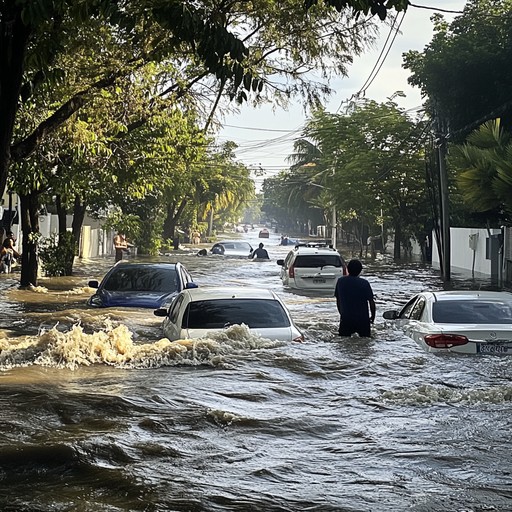Why Rain Is Getting Stronger
- First, the air is warmer. Warm air holds more water—about 4–7% more for each 1 °C rise.
- Next, storms form with more water. In the U.S., extreme storm rain grew by ~15% on average—and up to 60% in the Northeast.
- Also, in India, monsoons are more intense. Heatwaves and El Niño bring heavier daily rain and flash floods.
- Finally, more moisture = stronger storms.
🌊 What This Means for Us
- Floods hit faster. Cities like Copenhagen and London now struggle with storm drains during big downpours.
- New flood zones. Central India, once safe, is now facing floods due to sudden heavy rain .
- Beyond water damage. Floods can destroy homes, roads, and affect health—like mold and water diseases.
🛠️ How Cities Are Responding
To fight floods, cities are doing things like:
1. Green spaces that soak water
- Parks, green roofs, and wetlands absorb rain.
- Cities like Copenhagen use tanks under parks. London plans a £2 billion green flood plan.
2. Better drains and pipes
- New York uses both pipes and soil-based systems. Some places build moveable flood walls.
3. Flood maps and alerts
- Sensors and climate models help spot flood zones early. New York’s FloodNet and Texas maps do this.
4. Buyouts in flood zones
- In Texas, the state buys flood-prone homes. Then it turns land into parks or fields to absorb water.
✅ Why It Matters
- Safer homes and people.
- Stronger roads and drainage.
- Nature helps drain water.
- Better health outcomes by cutting mold and disease risks.
🎯 Final Thoughts
- Climate change makes the water cycle stronger.
- Rain storms are now heavier and more common.
- Flood risks rise—but cities can adapt.
- With smart planning and changes, we protect our future
